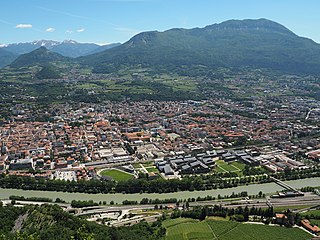
Trento, also known in English as Trent, is a city on the Adige River in Trentino-Alto Adige/Südtirol in Italy. It is the capital of the autonomous province of Trento. In the 16th century, the city was the location of the Council of Trent. Formerly part of Austria and Austria-Hungary, it was annexed by Italy in 1919. With 118,142 inhabitants, Trento is the third largest Italian city in the Alps and second largest in the historical region of Tyrol.

Lake Garda is the largest lake in Italy. It is a popular holiday location in northern Italy, between Brescia and Milan to the west, and Verona and Venice to the east. The lake cuts into the edge of the Italian Alps, particularly the Alpine sub-ranges of the Garda Mountains and the Brenta Group. Glaciers formed this alpine region at the end of the last ice age. The lake and its shoreline are divided between the provinces of Brescia, Verona (south-east) and Trentino (north).

Verona is a city on the River Adige in Veneto, Italy, with 258,031 inhabitants. It is one of the seven provincial capitals of the region, and is the largest city municipality in the region and in northeastern Italy. The metropolitan area of Verona covers an area of 1,426 km2 (550.58 sq mi) and has a population of 714,310 inhabitants. It is one of the main tourist destinations in Northern Italy because of its artistic heritage and several annual fairs and shows as well as the opera season in the Arena, an ancient Roman amphitheater.

The Adige is the second-longest river in Italy, after the Po. It rises near the Reschen Pass in the Vinschgau in the province of South Tyrol, near the Italian border with Austria and Switzerland, and flows 410 kilometres (250 mi) through most of northeastern Italy to the Adriatic Sea.
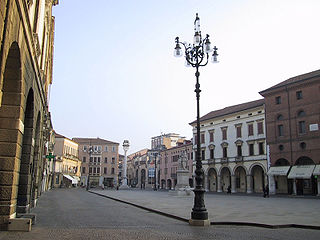
Rovigo is a city and comune in the Veneto region of Northeast Italy, the capital of the eponymous province.

Desenzano del Garda is a town and comune in the province of Brescia, in Lombardy, Italy, on the southwestern shore of Lake Garda. It borders the communes of Castiglione delle Stiviere, Lonato, Padenghe sul Garda and Sirmione.

Michele Sanmicheli, sometimes also transcribed as Sammicheli, Sanmichele or Sammichele, was an Italian architect and urban planner who was a citizen of the Republic of Venice.
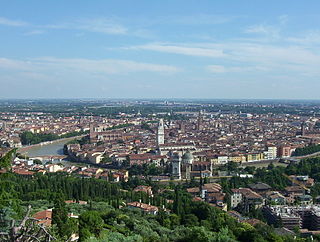
Events in the history of Verona, in Italy.

Lendinara is a comune in the province of Rovigo, Veneto, northern Italy. It is part of the historical and geographical region of Polesine.

Pomarolo is a comune (municipality) in Trentino located around 15 kilometres (9 mi) southwest of Trento in the northern Italian region of Trentino-Alto Adige/Südtirol.

Albaredo d'Adige is a comune (municipality) in the Province of Verona in the Italian region Veneto, located about 80 kilometres (50 mi) west of Venice and about 25 kilometres (16 mi) south of Verona. It is located on the river Adige. As of 2004, it had a population of 5,138 and an area of 28.2 square kilometres (10.9 sq mi).
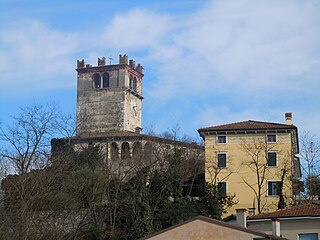
Castelnuovo del Garda is an Italian comune (municipality), in the Province of Verona, in Veneto, on a couple of morainic hills a few kilometers south-east of Lake Garda. Verona is about 20 km to the east, Venice is 140 km east and Milan 140 km west.

Lazise is a comune (municipality) and town in the Province of Verona in the Italian region Veneto, located about 120 kilometres west of Venice and about 20 kilometres northwest of Verona. It is situated on the eastern shore of Lake Garda. As of 31 December 2004, it had a population of 6,213 and an area of 65.0 square kilometres (25.1 sq mi). This geographical location empowers a position of great landscape value, but it also features elements of great architectural value and of great historical importance.

Bernardino India (1528–1590) was an Italian painter of the late Renaissance, born and mainly active in Verona.

Carbonera is a comune with 11,196 inhabitants in the province of Treviso, Veneto, northern Italy. It borders the municipalities of Treviso, Villorba, Spresiano, Maserada sul Piave, Breda di Piave and San Biagio di Callalta. The municipality of Carbonera includes the following villages or frazioni: Mignagola, Pezzan, Biban, San Giacomo di Musestrelle and Vascon.

The defensive system of Verona is a military, logistical and infrastructural complex consisting of city walls, bastions, forts, entrenched camps, warehouses and barracks, built between 1814 and 1866 during Habsburg rule, which made the Venetian city, the pivot of the so-called "Quadrilatero," one of the strong points of the Empire's strategic system. Thus Austrian Verona became an army stronghold, that is, a center that could supply the entire imperial garrison present in the Kingdom of Lombardy-Venetia, consisting of approximately 100,000 soldiers.

The Roman walls of Verona were an important defensive curtain wall equipped with numerous towers and monumental gates, built in several successive construction phases starting in the late Republican age and continuing through the early Roman-Germanic kingdoms.
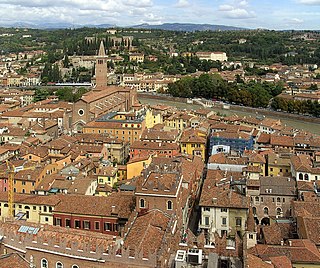
The Torricelle are the hills that surround the city of Verona to the north. The hills have been an integral part of the urban landscape since the founding of the city, whose first settlements in pre-Roman times saw the light of day on these very heights. From an orographic point of view, the Torricelle are the extreme southern offshoot of the Lessini Mountains included between Valpolicella and Valpantena; they therefore belong to the sector of the Venetian Prealps. In addition to various places of worship, villas and private homes, part of the Veronese city walls of the Scaligeri era are developed on the Torricelle, and various military fortifications built during the Austrian domination can still be found, which have become today a characteristic element of the Veronese hill and city landscape.
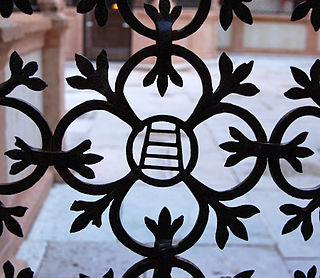
The monuments of Verona are a vast number of architecturally, archaeologically, historically, and artistically significant cultural assets that characterize the city of Verona. Precisely because of the richness of its monuments and the urban evolution that has developed seamlessly over the centuries, UNESCO declared the city a World Heritage Site in 2000.
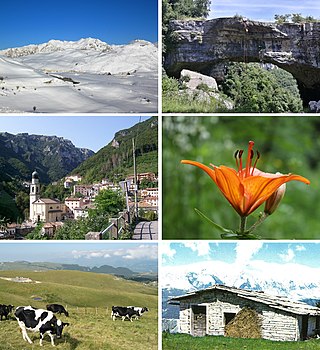
Lessinia, or Lessini Mountains, is a plateau and alpine supergroup located mainly in the province of Verona and partially in the provinces of Vicenza and Trento.






















